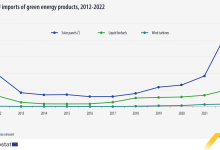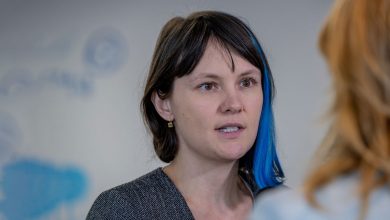How Romania Is about to Put at Risk Its Energy Future
By Mihaela Nyerges, Partner at Vlasceanu, Nyerges & Partners
At a time where the European Commission calls for a fast-tracking of permitting procedures to accelerate the rollout of renewables, Romania does the opposite.
Late July, the Land Law was amended in view of easing the permitting process, in line with the EU imperatives. However, what was meant to simplify the permitting process is being misinterpreted by the Ministry of Agriculture and Rural Development in such a way that blocks all developments of renewables in Romania.
As a rule, erecting any constructions on agricultural land located extra muros is prohibited. If such a land is targeted, it must be first requalified as intra muros land by means of a zonal urban plan (PUZ), with the prior endorsement of the Ministry of Agriculture and Rural Development (MADR). Although there were few exemptions from this rule, none applied to stand-alone power generation capacities.
The above process was followed for all photovoltaic projects that were developed in Romania in the first wave of renewables.
Although no legislative changes have been adopted to the above rule, this process seems to no longer be to the liking of MADR as of the beginning of this year. All requests submitted to MADR for the issuance of its prior endorsement (necessary for land requalification as intra muros) were simply not responded, most probably due to absence of a legal provision supporting a negative response.
Late July, the Land Law was amended only to insert an additional exception from this rule. According to this amendment, the development of renewable power capacities, storage and related installations is allowed on agricultural extra muros lands to the extent the land (i) does not exceed 50 ha and (ii) has a fertility class III, IV and V. Such projects must follow instead a special procedure for requalifying the land from agricultural to buildable land.
Although this law was meant to smoothen the permitting process, what followed caused a major disturbance in development of renewables.
MADR immediately started to reject all requests received from the beginning of the year, for projects below and above 50 ha alike. What is also striking is that there is simply no legal argumentation for such rejection. The MADR copy-paste responses consist merely in (i) quoting the new legal provision which allow the development of renewable capacities on extra muros land not exceeding 50 ha and (ii) inviting the applicants to follow the special procedure applicable to such projects (below 50 ha). In other words, MADR is interpreting the exception meant to ease small projects, as a rule and sole legal base for development of all renewables in Romania.
So how does this position of MADR translates to renewable energy sector?
1.Projects above 50 ha are completely blocked
Development of renewable energy projects above 50 ha are completely blocked. Such projects cannot follow the legal procedure designed for small projects (because they do not fulfil the legal requirements for the application thereof) and the procedure designed by the law for such big projects is denied by MADR.
The impact on such projects is significant considering that:
- projects applying for MADR endorsement are very mature projects, for which the investment process was initiated at least 1 year in advance;
- the developers had already made significant financial investments in the projects, either by purchasing the lands or by committing to long-term superficies agreements (approximately 30-35 years);
- the projects are in risk of losing the grid connection rights, since the grid connection permits expire if the building permit is not obtained within 18 months from the issuance thereof (and the building permit may not be obtained before requalifying the land as intra muros);
- the project having applied for PNRR grants are in risk of losing the financing as result of failing to observe the commissioning deadlines;
- investors had already paid the fee for land requalification as intra muros which, for a project of approximately 130 MW, may be of EUR 1 million.
2.Romania will not have PV projects bigger than 42 MW
The maximum capacity of a PV project which may be developed on 50 ha of land is of around 42 MW. Considering that the land suitable for renewable energy projects is agricultural extra muros land, the above interpretation means that, in Romania, it will not be possible to develop PV projects higher than 42 MW.
3.The connection of new PV projects directly to 400 kV transmission grids is no longer economically feasible
Connecting a PV project to the 400 kV transmission grid entails high connection costs that are not economically feasible for projects below 200 MW. Considering also the limited available grid capacity in Romania, indirectly excluding from connection the 400 kV substations/lines restricts even more the connection options already very scarce.
4.Romania’s energy security will be significantly affected
Starting 2019, Romania has become a net importer of electricity due to lack of investments in new power generation capacities during the last 8 years. Also, Romania’s decarbonization plan requires the decommissioning of existing coal-based capacities. It is, therefore, imperative for Romania’s energy security that significant investments are made in the development of new renewable energy capacities. Lack of investments will trigger higher energy prices for Romanian market.
5.Romania will not be able to meet its renewable energy targets
Due to a very generous green certificates scheme adopted back in 2008-2010, Romania has met its 24% renewable energy target imposed by European Commission for the year 2020 (thanks also to a decrease in the consumption in that year).
However, the target to be fulfilled in 2030 is challenging. Romania has in its Integrated National Energy and Climate Plans a target of 30.7% which was to be increased to 34% before REPowerEU plan was adopted. We can expect that the European Commission will request an even more ambitions target for 2030. This requires high investments in new renewable energy generation capacities.
6.Romania’s food security is not affected by the development of renewables
All projects needed by Romania for meeting its 2030 target will not affect more than 0.05% of the entire arable land in Romania. Therefore, the development of such projects will not cause a real impact on food security.
7.Legislative instability is severely affecting Romania’s ability to attract investments
The development of renewable energy production facilities is capital intensive, and Romania does not have the internal resources to finance it completely. Romania competes for such investments with other EU member states. Unfortunately, the legislative instability we are experiencing is severely damaging the attractiveness of Romania for foreign investors.
These are crucial times for Romanian energy sector. The policies we adopt now will shape the energy security, will significantly influence the energy prices, and will define our path towards a cleaner and greener future.







